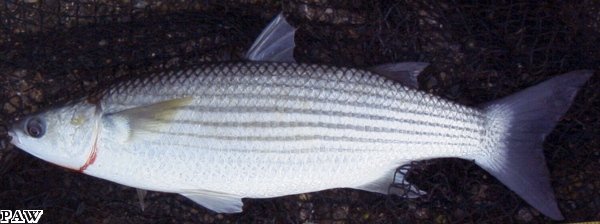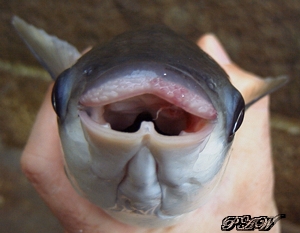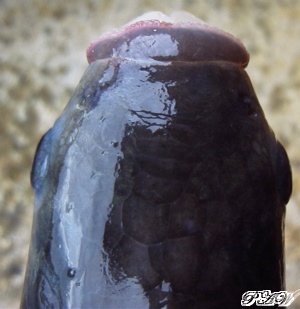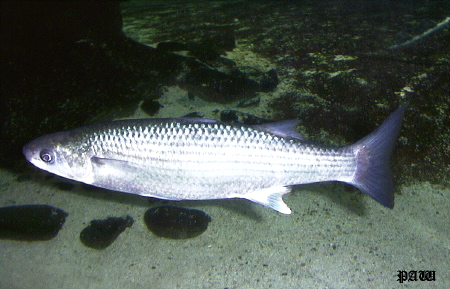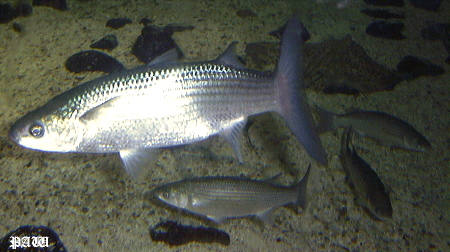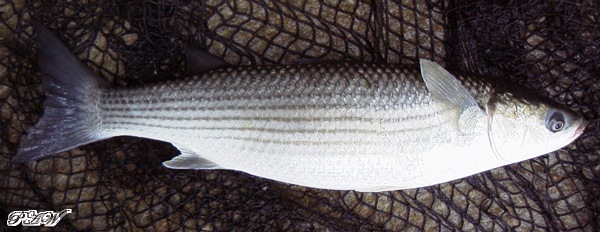Identification:
The relatively small but flattened head has a small mouth
in which the snout is longer than the upper jaw. This is the result of the
upper lip, being thick and prominent, with warty looking papillae present
on the lower half. Teeth are present but are minute and closely packed. The
eyes are also small, and have a partial covering of membrane, save for the
pupil. The midline space on the underside of the lower jaw is narrow.
This fish has two well spaced dorsal fins, the first being fan like and composed
of 4 membrane bound spines. The second dorsal fin has 9-10 branched rays,
whilst the very similar shaped anal fin has 3 anterior spines followed by
8 to 9 branched rays. The pectoral fin is more straight edged and pointed
than that of the Thin Lipped Grey Mullet. It also extends past the centre
of the eye if pushed forwards. The caudal fin shows a degree of forking in
it's profile.
Colouration ranges from a dark greenish to bluish grey of the back and upper
sides, through to a silver grey of the mid to lower sides, and the white
of the belly. The sides also exhibit 6 to 7 darker bands running lengthways
along the body.
Breeding:
Spawning occurs from January through into
April, with juvenile fish being found inshore and on occasions in intertidal
pools during the summer. The fish mature at around 4 to 6yrs, or over
30cm. Age to size ratios are estimated at being something like 40cm
= 9yrs, and a fish of 50cm something in the order of 12yrs.
Habitat:
Coastal inshore waters of estuaries, harbours, sandy bays and are often
encountered in low salinity environments / lagoons. Found in closely shoaling
schools near the surface.
Food:
Feeds on organic and algal material found on the upper surface sediments
and mud, with the indigestible material being filtered out by the gill rakers
.. however large amounts of mud are consumed, which will have a wide range
of small organisms, such as Copepods, Nematodes etc... but 85% will be
indigestible matter.
Range:
Found throughout the coastal waters of the UK and Ireland, although
more common in the south and south west.
Additional Notes:
|
